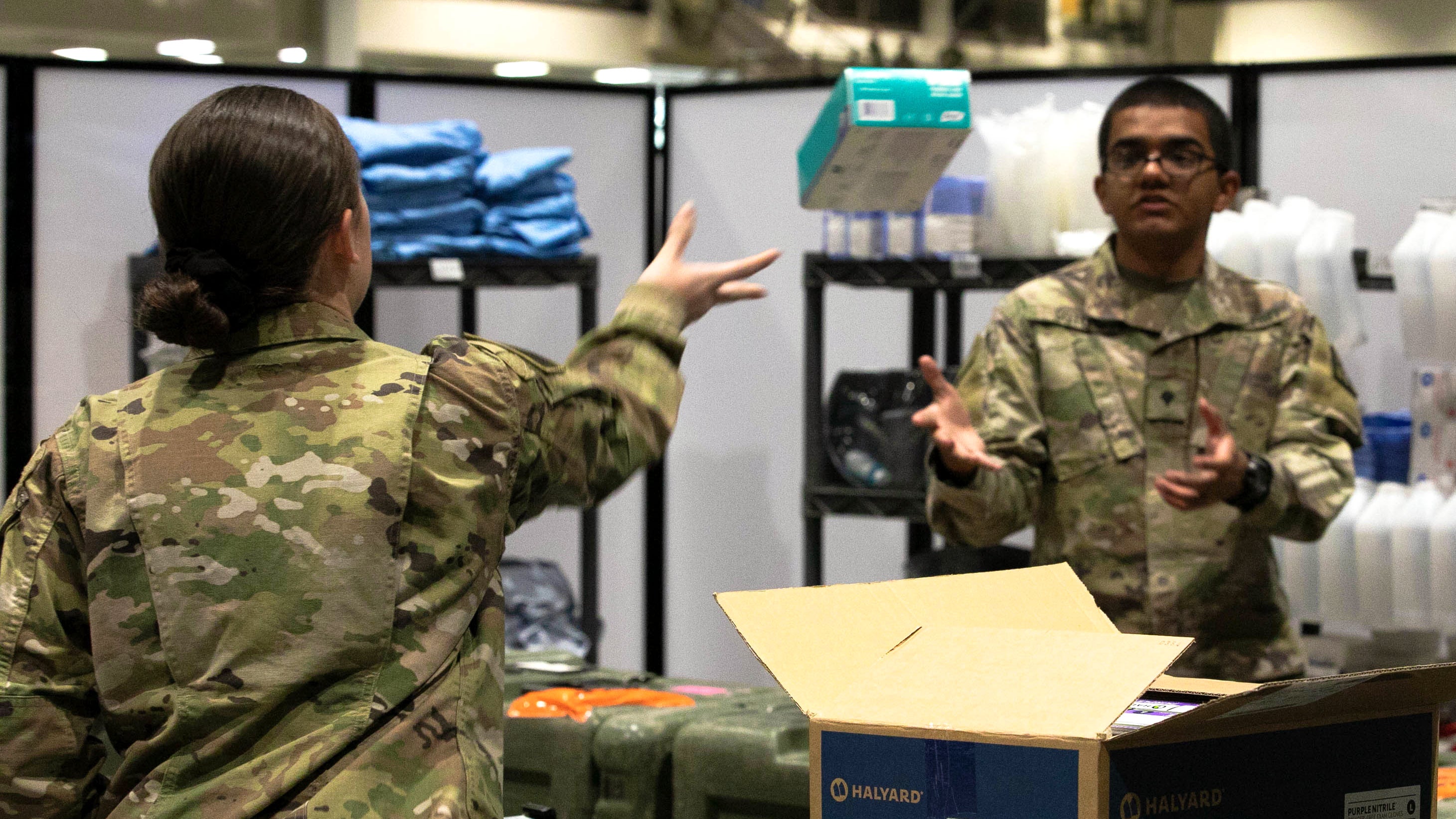Communication, Training Aided COVID-19 Response
Communication, Training Aided COVID-19 Response

Communication and exercises helped prepare the Army for an unprecedented “whole of nation” response to the COVID-19 pandemic, DoD and Army leaders said.
“COVID-19 required an unprecedented response,” Lt. Gen. Laura Richardson, commanding general of Army North said Oct. 14 during AUSA Now, the Association of the U.S. Army’s virtual 2020 annual meeting.
“We have only trained for something like this in an exercise,” she said, adding that 10 FEMA regions were activated in response to the pandemic.
As civilian hospitals and care facilities across the country became overwhelmed earlier this year, the Army developed field hospitals, designed so medical providers could arrive quickly and begin working within one or two days, Richardson said.
Since the start of the pandemic, more than 3,800 military medical providers have responded to 134 FEMA-approved missions and deployed to 10 states, she said.
Army North, the Joint Land Force Component Command for U.S. Northern Command, has also assisted 47 hospitals and nine alternate care facilities.
Lt. Gen. Jon Jensen, director of the Army National Guard, said focusing on relationships between DoD, state and federal agencies enabled an immediate emergency response, especially as states faced “different levels of this pandemic across the country.”
“Our ability to really communicate from the ground level all the way to the senior executive level under the Department of Defense was very important during this time,” Jensen said.
Senior defense leaders took part in frequent “huddles” to share information, sometimes multiple times a week, Jensen said.
Rapid information sharing and an established understanding of each agency’s capabilities contributed to the success of coordinated efforts, according to Robert Salesses, deputy assistant secretary of defense for homeland defense integration and defense support of civil authorities. “It's been tremendous,” he said.
The nation’s response to the pandemic isn’t over, Jensen said, as more than 17,000 Guard troops remain on duty to support COVID-19 efforts.
In addition to the ongoing health crisis, service members continue to support response efforts for hurricanes, wildfires and civil disturbances across the country.
“DoD has demonstrated its resilience and ability to continue to execute all of its missions throughout this pandemic,” Salesses said. “And again, it's a real tribute to the leaders at every level.”

